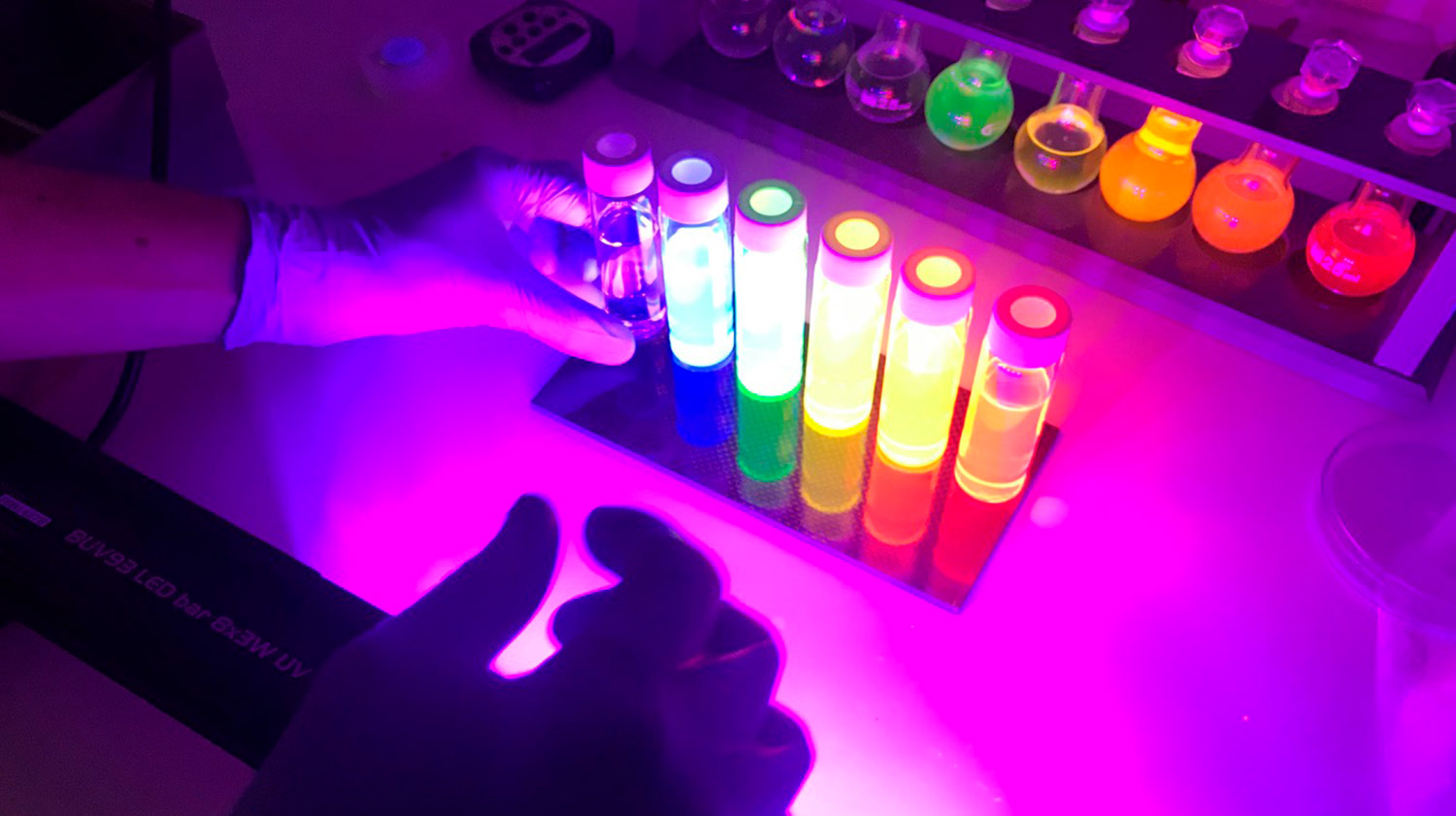

Taking advantage of emerging low-cost, resource-efficient printing technology is crucial as we seek to solve pressing energy challenges with sustainable, renewable and affordable solutions.
But for maximum value to be extracted from the next generation of flexible solar cells and other light-harnessing equipment, manufacturers and industry require a better understanding of the materials these devices are created from.
That’s where Exciton Science’s Dr Asaph Widmer-Cooper and his team at the Soft Matter Theory and Computation Group come in. Asaph is a computational chemist with expertise in modelling the structure and dynamics of amorphous, crystalline and self-assembled materials.
Based at The University of Sydney, Asaph’s group collaborates with scientists and engineers from The University of Melbourne, RMIT University, Monash University, UNSW Sydney and CSIRO to study the formation and properties of solution-processed materials.
Solution processing involves dissolving substances in liquid, applying that liquid to a surface and then treating it in a special way, such as controlling the drying conditions, to leave a precisely structured version of those substances deposited on the surface as a solid.
Asaph explains: “We use computer simulations to study solution-processed materials and their properties.
“That includes things like how do you print solar cells, how do the materials form, how can you influence that process to get structures to form that are more efficient for devices. We really look at quite a wide variety of things.”
The expert knowledge of modelling within his team means many other members of Exciton Science call on the Soft Matter Theory and Computation Group to provide them with insight into what they can expect from the materials they are experimenting with.
“We are solving fundamental problems that should be important for practical applications. We don’t build the solar cells, we don’t model the actual solar cells, but we look at how the materials form that are used, with the aim of helping others make better materials.”
Part of the focus for Asaph and his team is understanding and optimising self-assembly, to increase efficiency in the creation of materials to extract and harness sunlight.
“Self-assembly is this idea of doing things from the bottom up,” he said.
“Rather than taking a big chunk of material that you can see and cutting it into little pieces, maybe on the nanoscale, the idea is that you start with something really small, like a molecule or a nanoparticle and then by manipulating the interactions between those components and the processing conditions, things like temperature or an electric field, you drive them to spontaneously order into a structure that will be useful for a device, for example.”
Despite considerable advances in our understanding of molecular self-assembly in recent decades, we shouldn’t make the mistake of thinking that it will enable us to craft high-tech equipment out of thin air.
“You can’t just go out there and assemble whatever you want into whatever structure you want,” Asaph said.
“It’s not like 3D printing where you specify the structure and put things where you want them. It’s really a bottom-up thing where you have the components and you have to figure out how to make them interact with each other to get them to spontaneously form the structures that you want.
“An example where self-assembly is used in technology today is in liquid crystal displays, [like] computer displays. That relies on molecules being arranged in a highly oriented way on a surface. Those molecules respond to an electric field and that turns pixels on and off. That creates the patterns on your screen.”
For Asaph, working within Exciton Science is an opportunity to focus his efforts directly on tackling the pressing issues looming large early in the 21st century.
“After my PhD I really wanted to take [my] skills and apply them to renewable energy and addressing some of the big societal challenges that we face,” he said.
“It was definitely a conscious decision ... I wanted to have a more direct impact on renewable energy.
“I want to be at the point where there are scientific discoveries to be made that will then make something new possible. I’m glad I’m in a position in the Centre where I can interact with engineers and people who do scale-up so I can understand the problems that they face, because that helps me to focus the problems that I work on.
“There’s an infinite number of interesting scientific problems out there, but this helps me to focus on ones which, if they are solved, may really enable a big leap forward in technology.”

University of Sydney